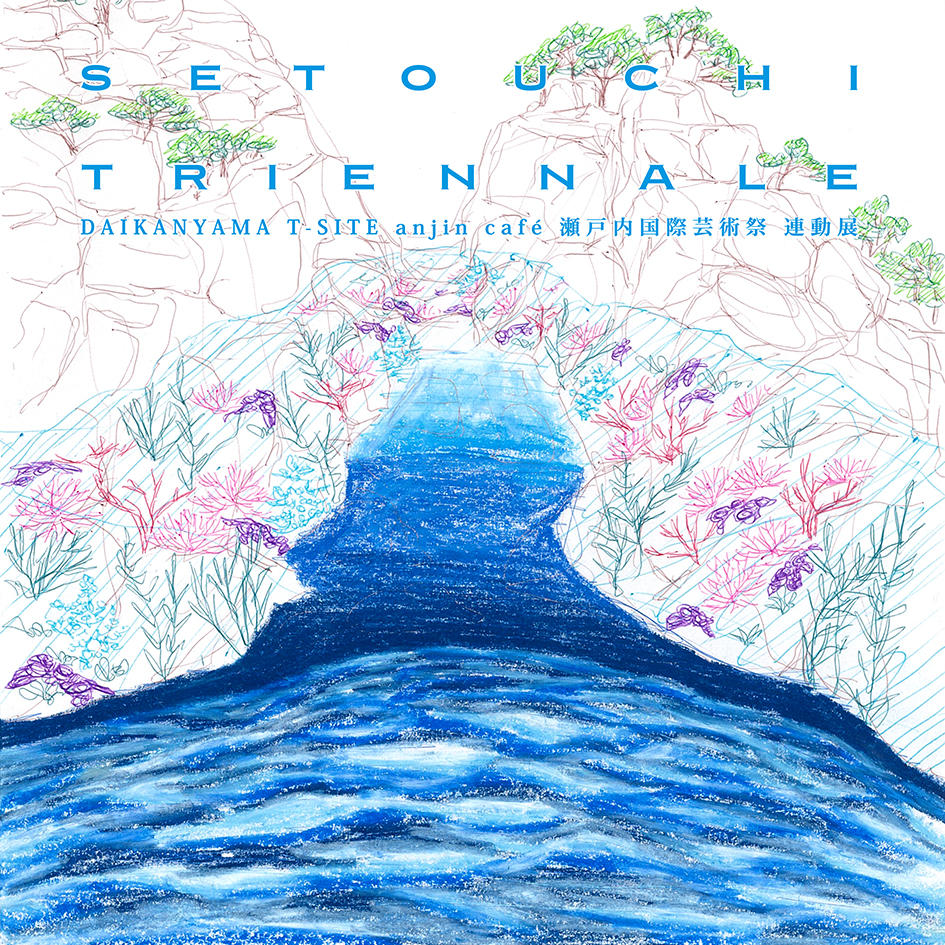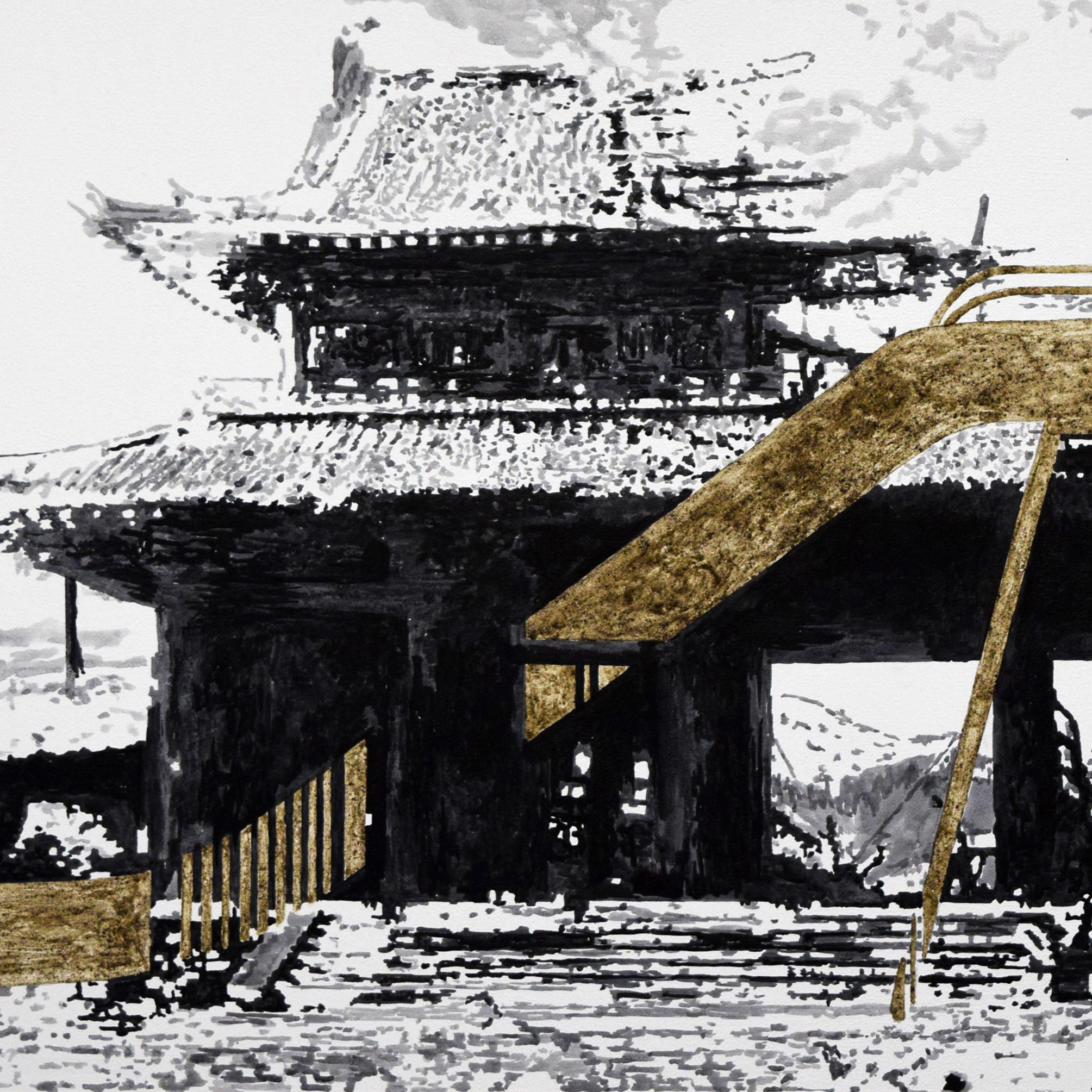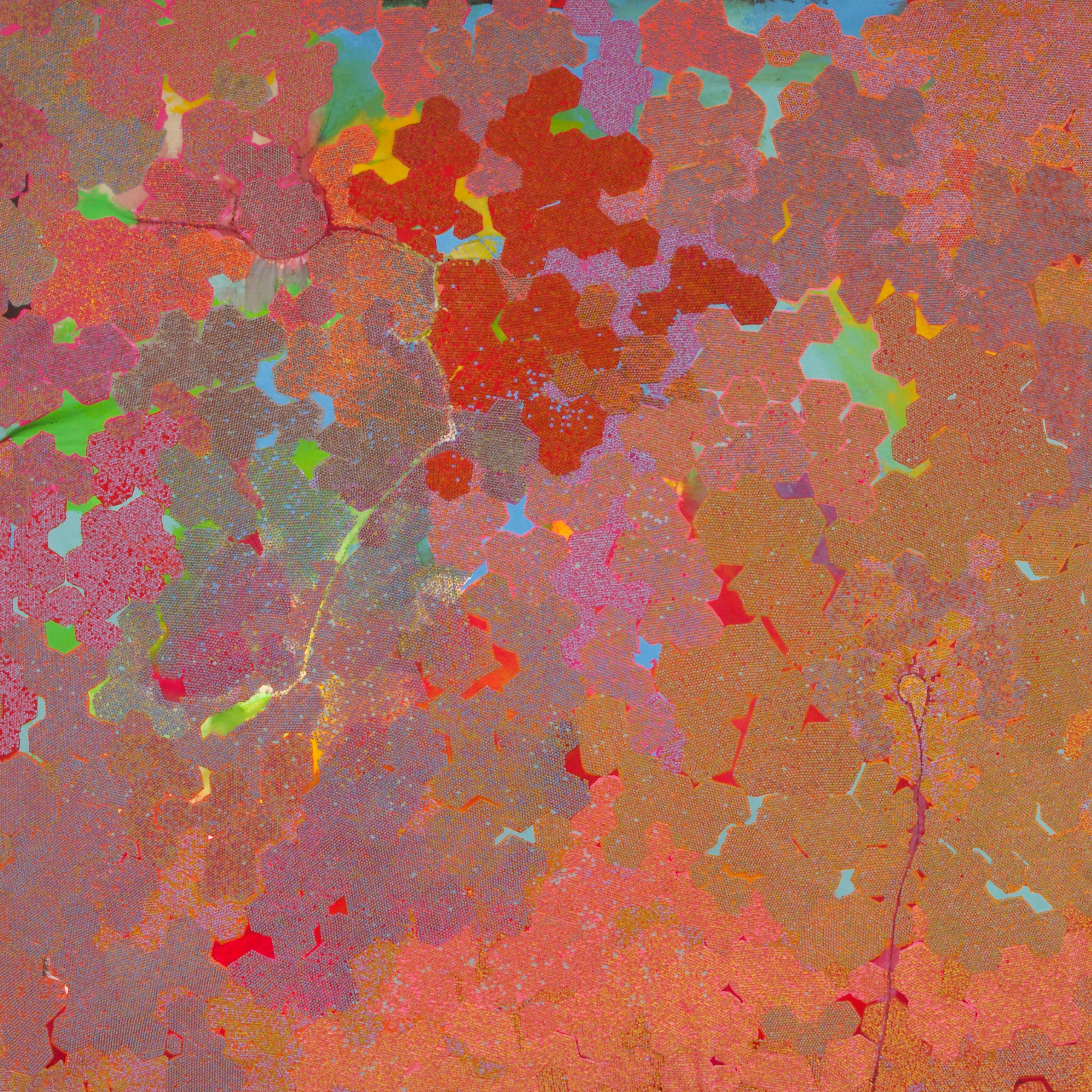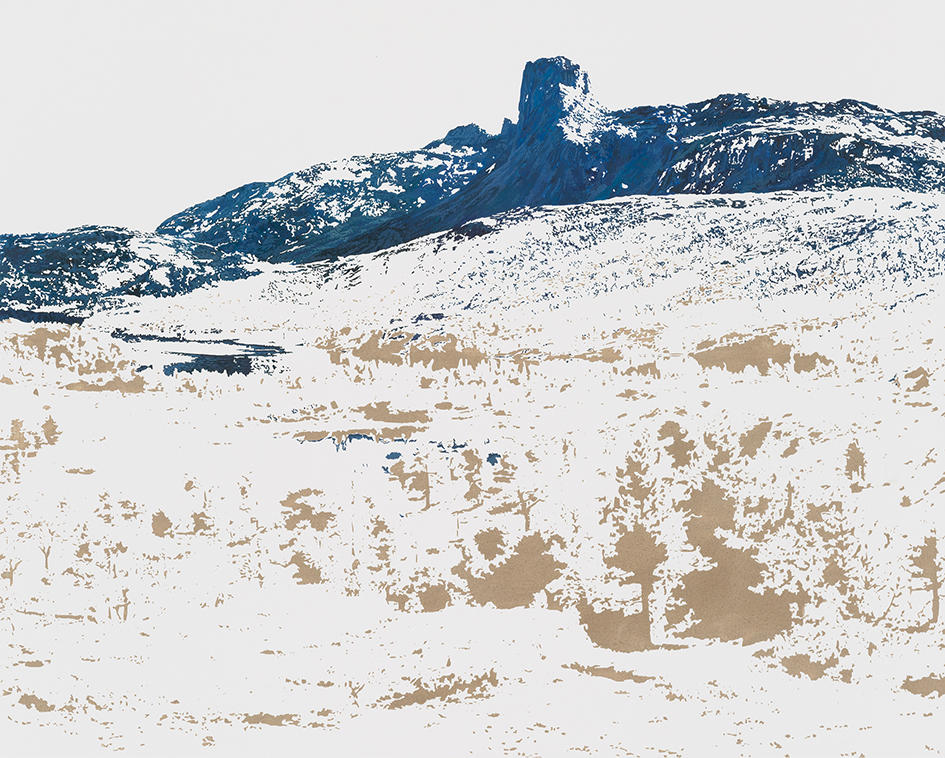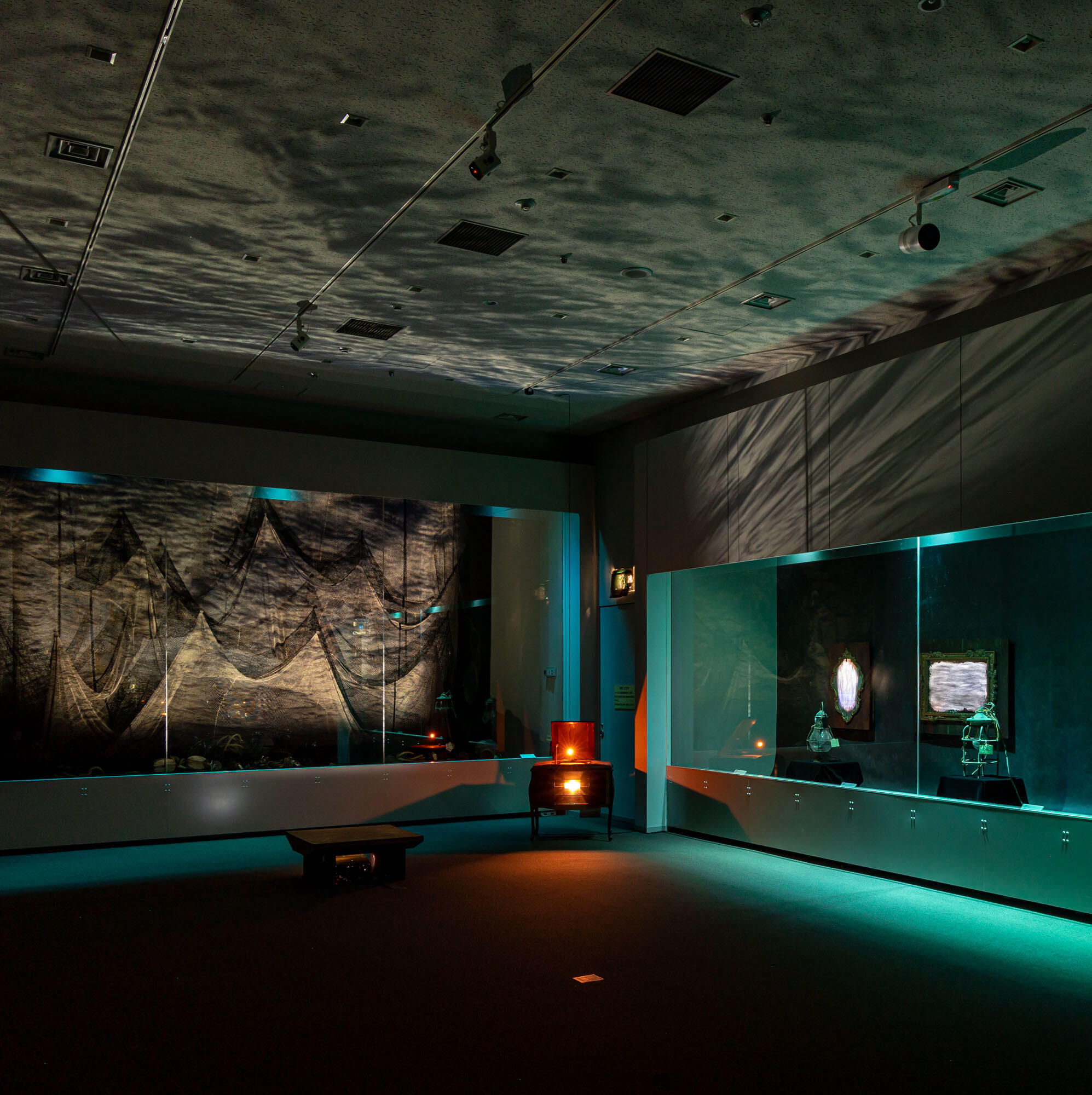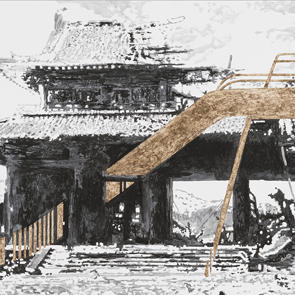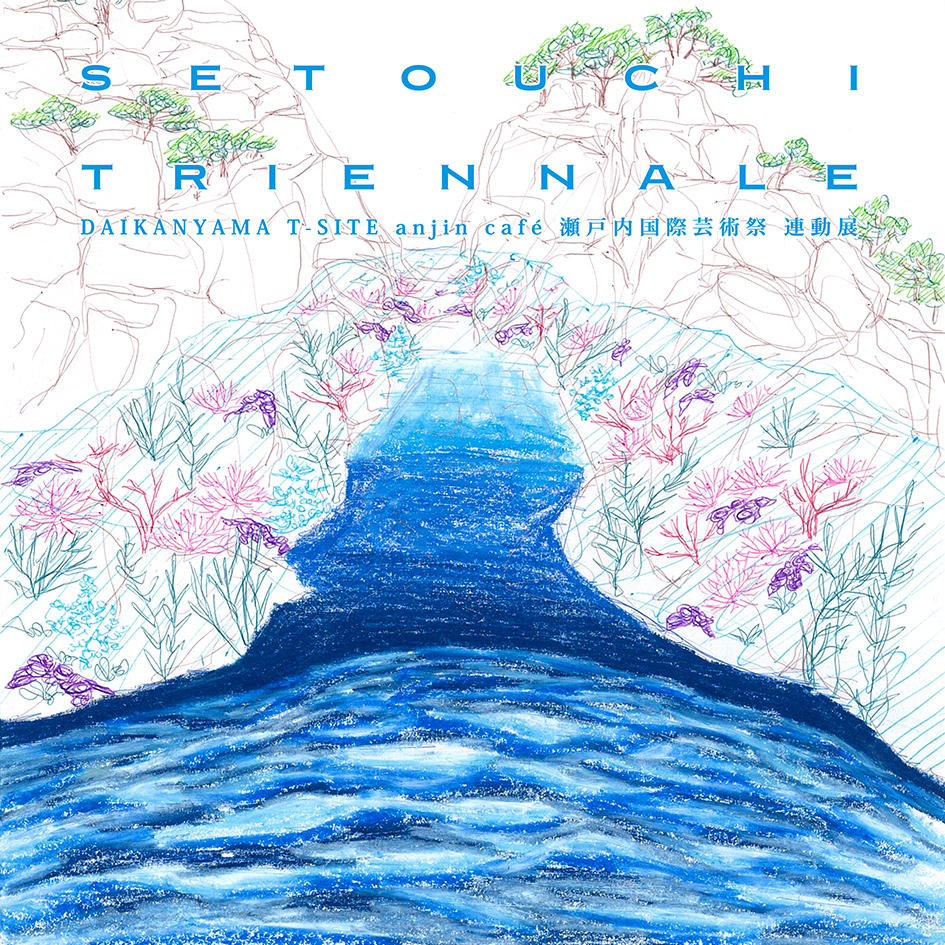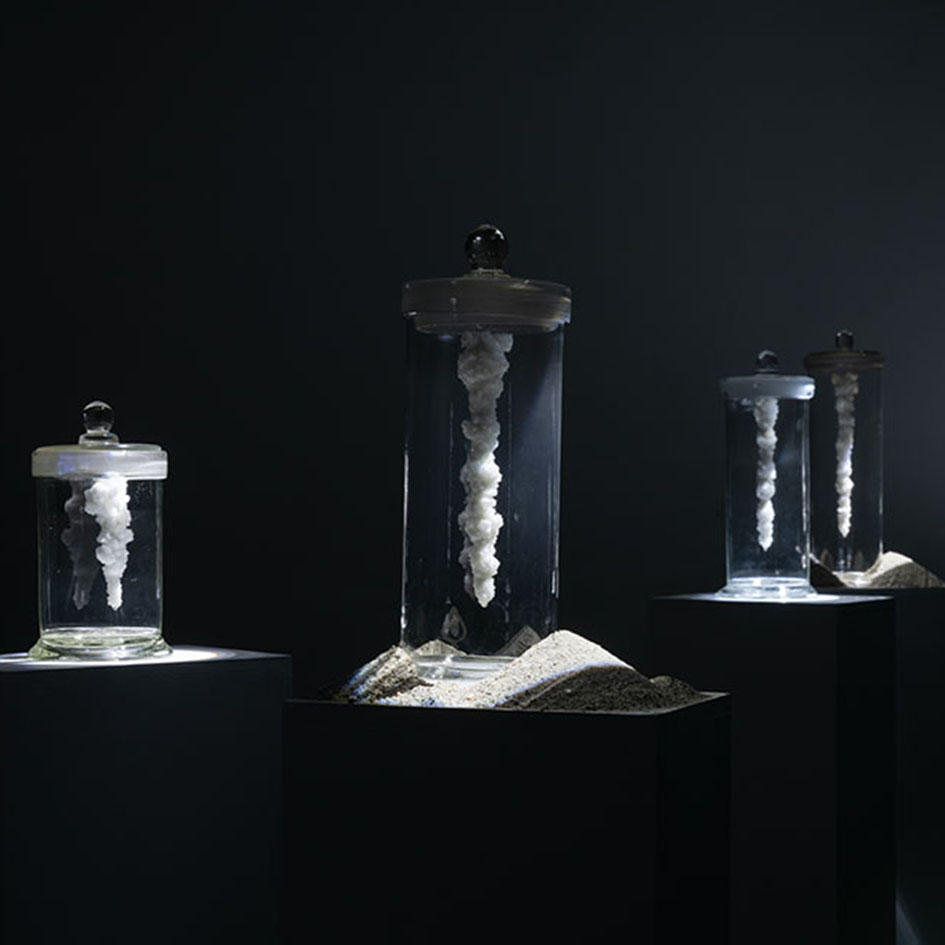Exhibition
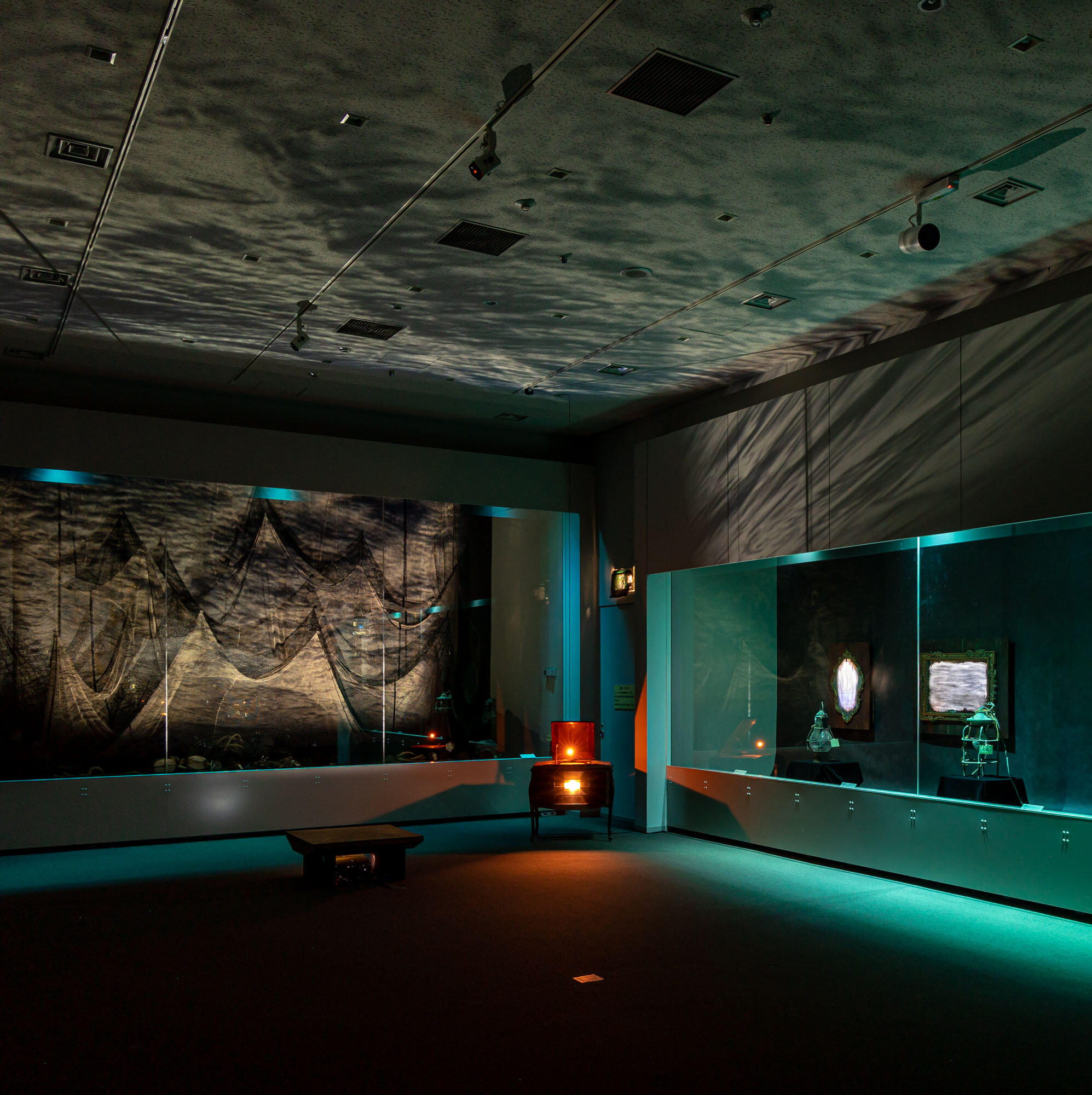
Cooperated with Takuya Kamiike, photo by Shintaro Miyawaki
Yoshitaka Nanjo Solo Exhibition: senne
2023, Oct. 7 (Sat) - Oct. 22 (Sun)
| Date | 2023, Oct. 7 (Sat) - Oct. 22 (Sun) |
|---|---|
| Hours | Wed. - Fri. 12:00 - 19:00 / Sat. and Sun. 11:00 - 17:00 |
| Closed on | Monday and Tuesday |
| reception | October 7 (Sat)16:00 – 18:00 |
| artist at the gallery | October 7 (Sat.), 8 (Sun.), 21 (Sat.), 22 (Sun.) |
In 2016, when he moved the center of his life from Tokyo to Wakayama, he began to absorb the local area experientially and show signs of breaking away from expression through two-dimensional works. What brought about a major change was an installation work presented in an exhibition at Art Front Gallery in 2017. This work was a trial of the artist's new development for the Okunoto Triennale held in the same year, in which a ray of light and fine soil fell and accumulated in the darkness, creating an opportunity to express in a different way the time and space he had previously expressed in his paintings. At an art festival held shortly after, he presented an installation set in a closed movie theater, in which disused tools were used as the main actors, as if in a play. From this point on, Nanjo shifted his stance from painting to a more comprehensive form of expression, using sound, light, and space to showcase the history and culture of the local area.
In recent years, Nanjo's activities have been remarkable, and for the Okunoto Triennale 2020+ at Corona Hazards in 2021, he curated eight artists and their works in the gymnasium of the former Suzu Municipal Seibu Elementary School in response to director Fram Kitagawa's Ohkurazarae project, realizing the Suzu Theatre Museum The concept was realized. The group exhibition "The Secret of the Lake: The River Became a Lake" is currently being held (~9/24) to commemorate the 10th anniversary of the Ichihara Lakeside Art Museum, and the new installation rooted in the local community has been attracting attention.
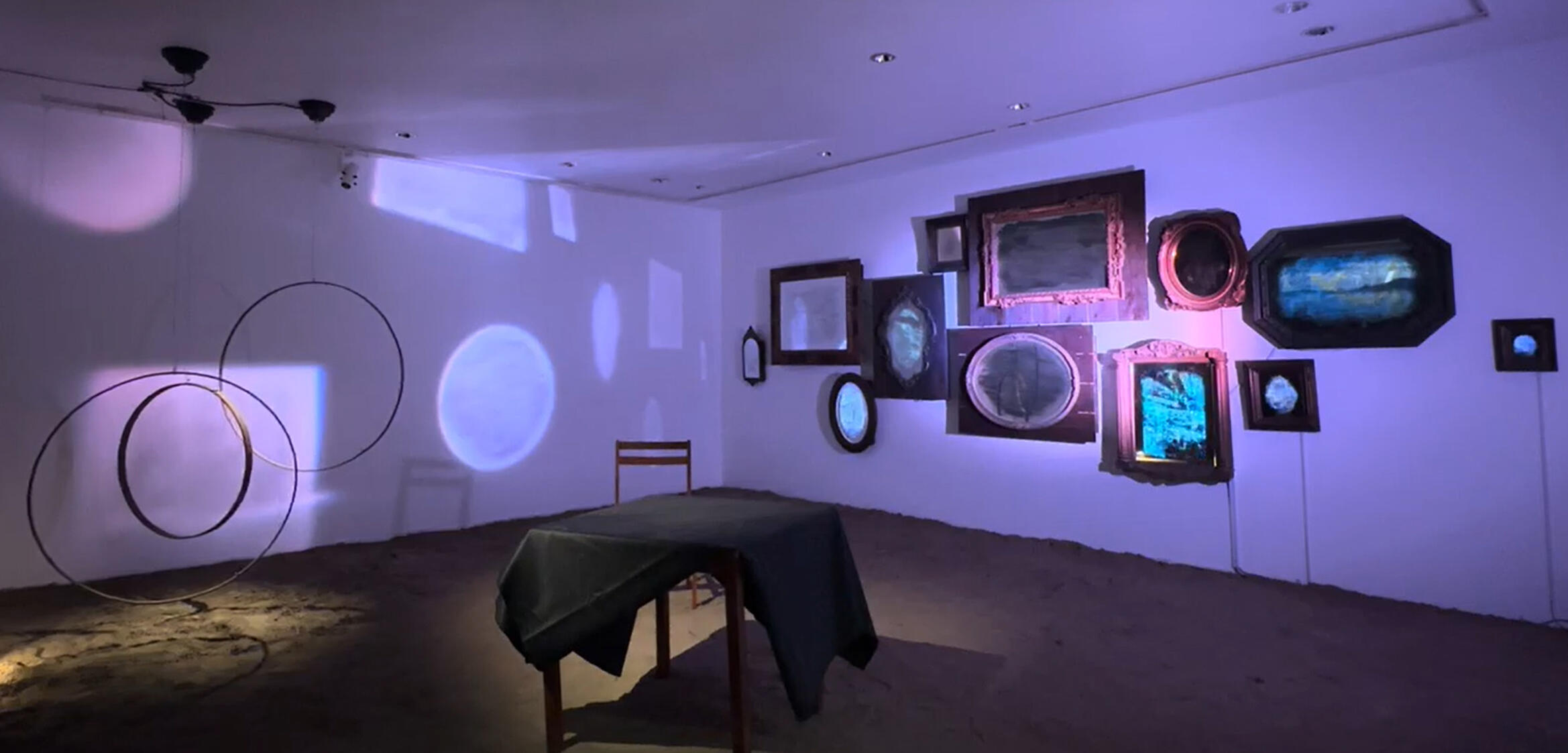
A Palimpsest in 2.5 D
Clélia Zernik [Art critic and a professor of philosophy at The École Nationale Supérieure des Beaux-Arts Paris]
In Dreams, Akira Kurosawa makes the ultimate artists’ dream come true - to enter Van Gogh's paintings.
In his own way, Yoshitaka Nanjo also thinks of his art pieces as plunges into images he has previously conceived. In his earlier paintings, he used earth of the described sites and pigments to construct an image of palimpsest that both unified and desynchronized the site, restoring all its layers and strata. A palimpsest is a manuscript on parchment whose ancient texts were erased by medieval copyists and covered by a more recent text. The different strata remain legible in transparency, simultaneously revealing different periods of time. Nanjo strives for the same stratification of temporalities. When he focuses on the singularity of a place, it's not so much the objective configuration of a geography that interests him as the history of a community in relation to a territory, and thus the whole web of relationships, projections and superimpositions that resemble palimpsest writing.
In his installations, symmetrically, the aim is to unfold the different strata of palimpsest writing, to move away from two-dimensionality, without opening the way to artificial reconstitution, but rather to remain in an in-between space, in “2.5 D” one might say, between two-dimensionality and relief, in something more akin to the superimposition of layers in space. In this way, space is created in the succession of paintings, of images, and the viewer can wander in fact through an in-between-image, which remains, as in the earlier paintings, a space of projection and interpretation, a palimpsest in space.
In several works of Nanjo, the painting begins to move, becoming a moving surface, a labile layer in constant transformation. Moreover, a kind of confusion is introduced between paintings and mirrors: the fixed surface of the painting becomes mobile and alive, while the reflections of the mirror remained fixed. Behind the colored iridescence, it is indeed the surface of the sea that these images refer to. It's as if the surface of the sea has been lifted out of its depth and becomes a moving painting. The watery sheet is depthless, being fused as one of the layers in the artist's palimpsest installation.
Water, however, is the all-encompassing surface, which in its comings and goings becomes the immemorial stratum, also that of early man and cave paintings, which comes into dialogue with the other surfaces in a movement of surf and buoyancy. Here, everything happens on the surface, but as in a palimpsest, the surface is treated as transparent, revealing the other interwoven surfaces. In this way, Nanjo reveals the essence or spirit of a place, in the superimposition of its temporal states. In this surface projection, objects such as pottery, stones and everyday utensils act as intercessors, drawing us into the depths of the strata of time and leading us from one surface to another. Shadows, lightings and projections constitute a series of devices that relocate the image and diffract space.
As in Richard Wagner's Parsifal, one can say that "Here, time becomes space".
Artists
Related News




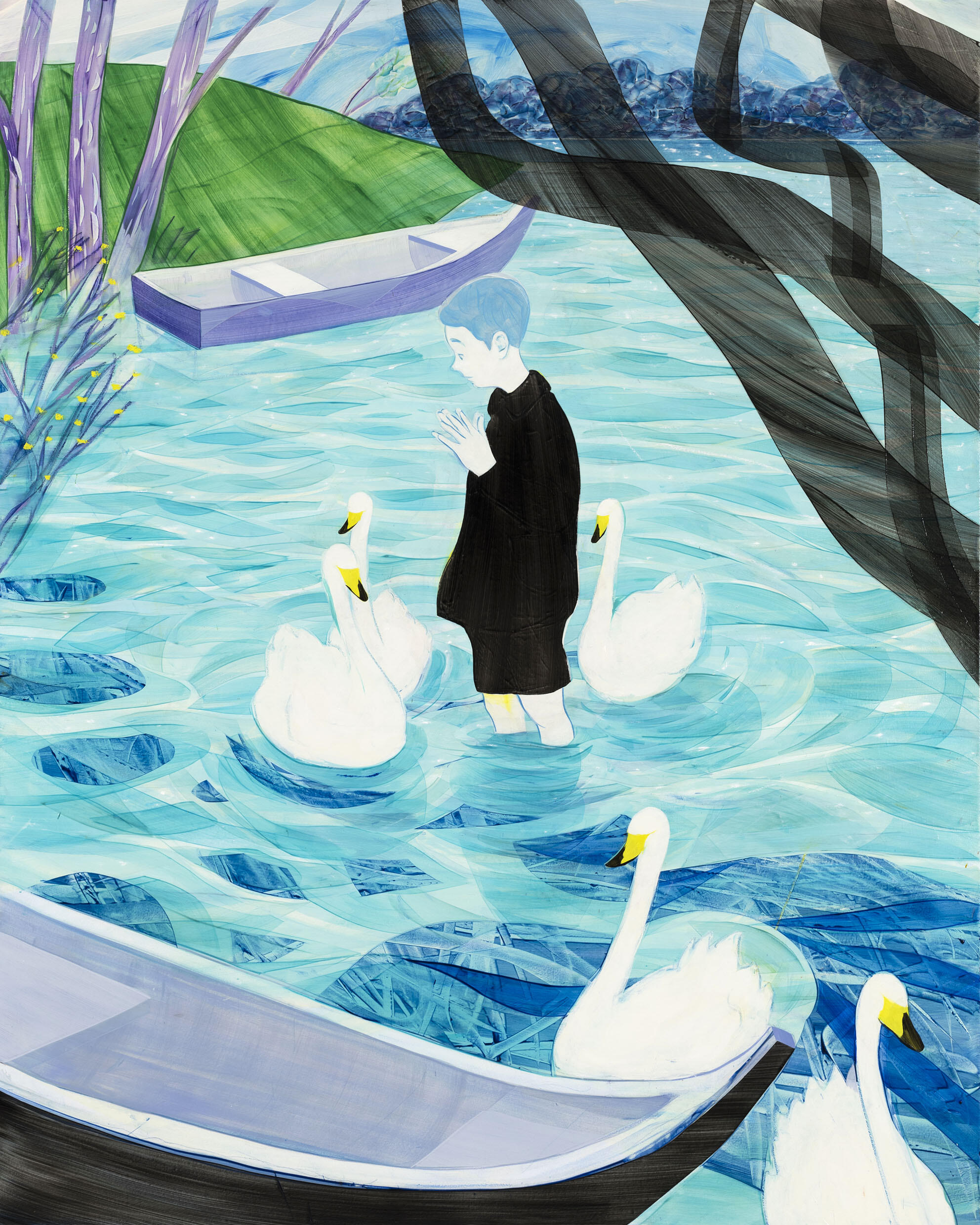

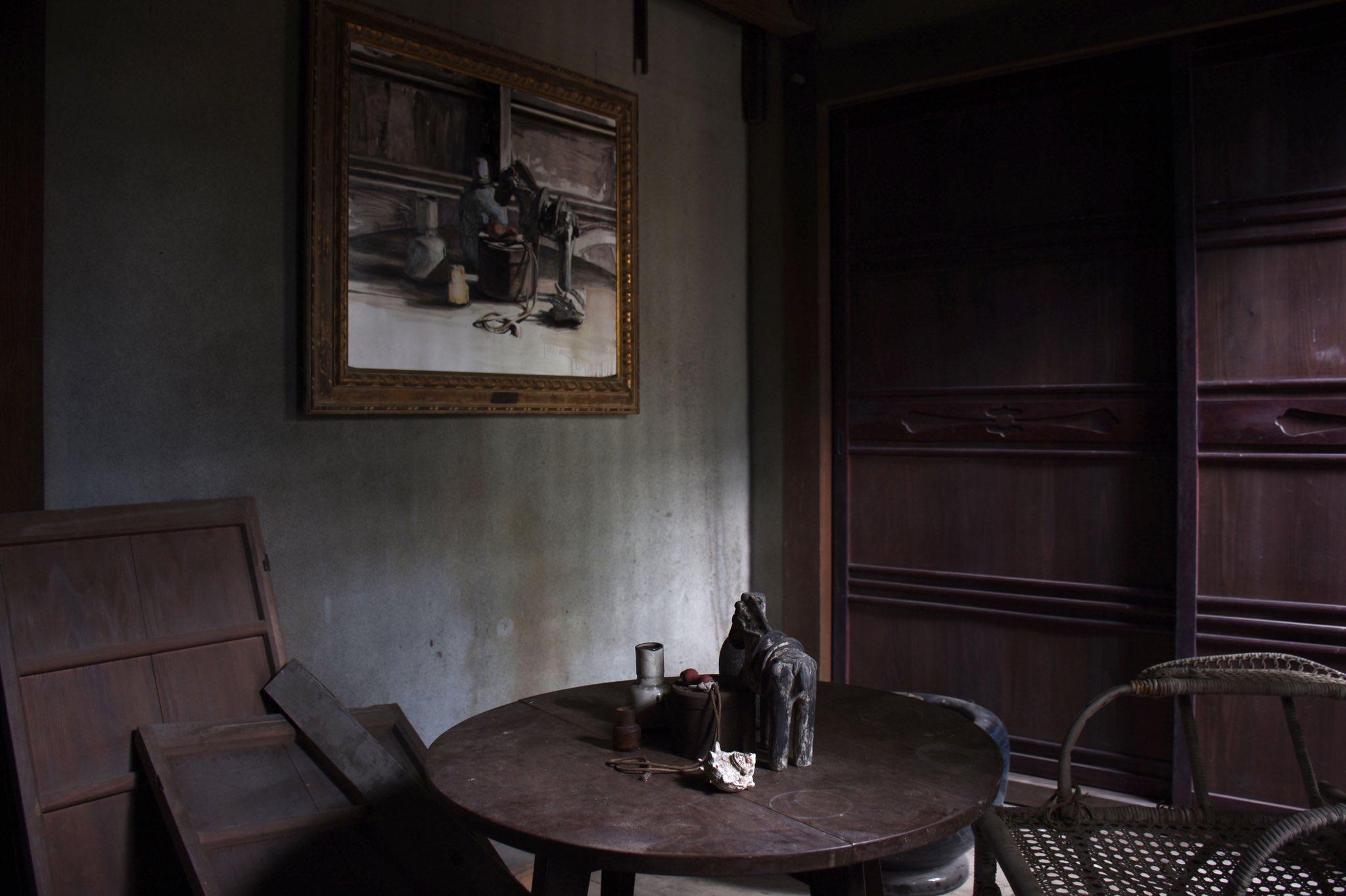

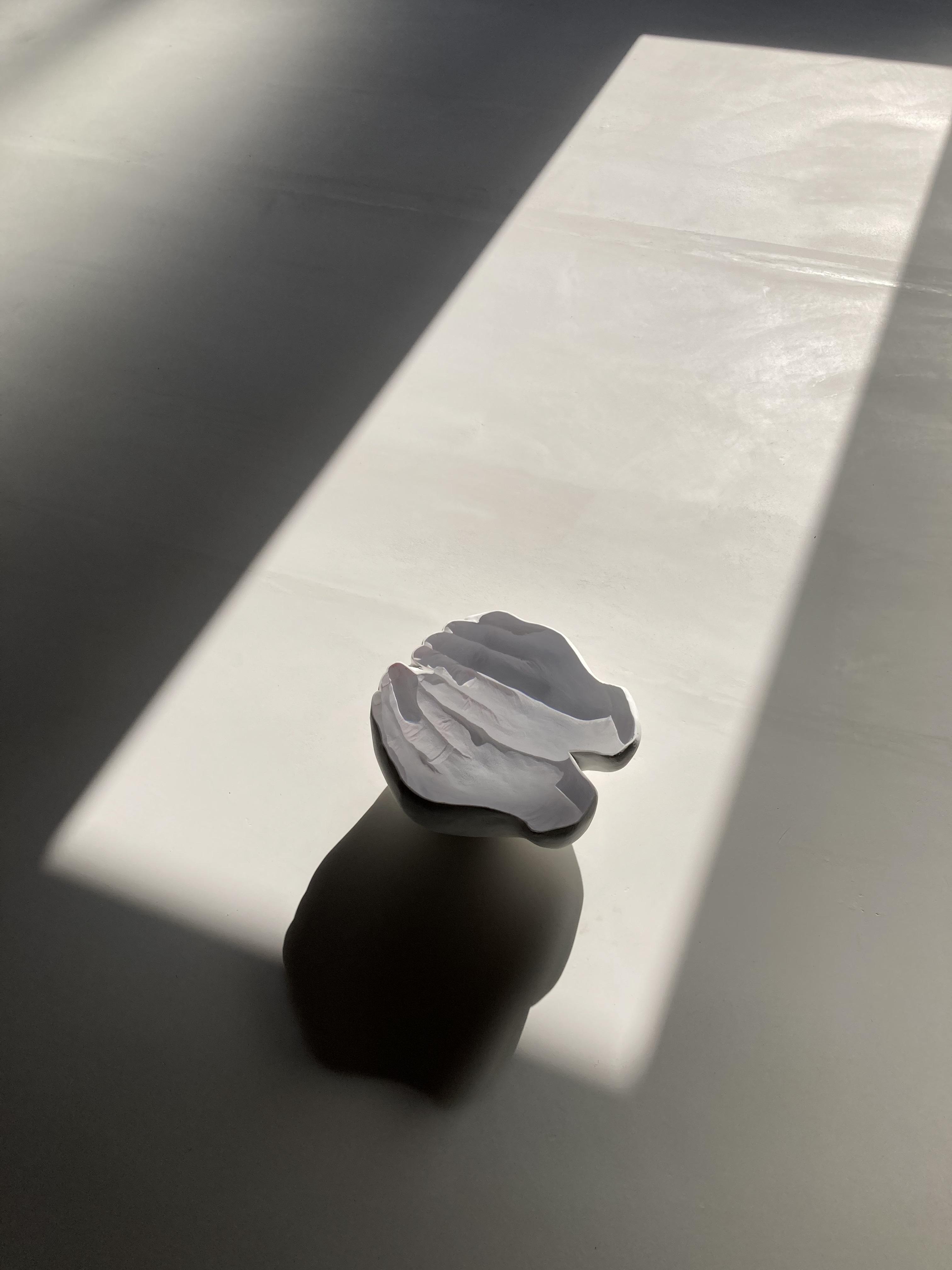

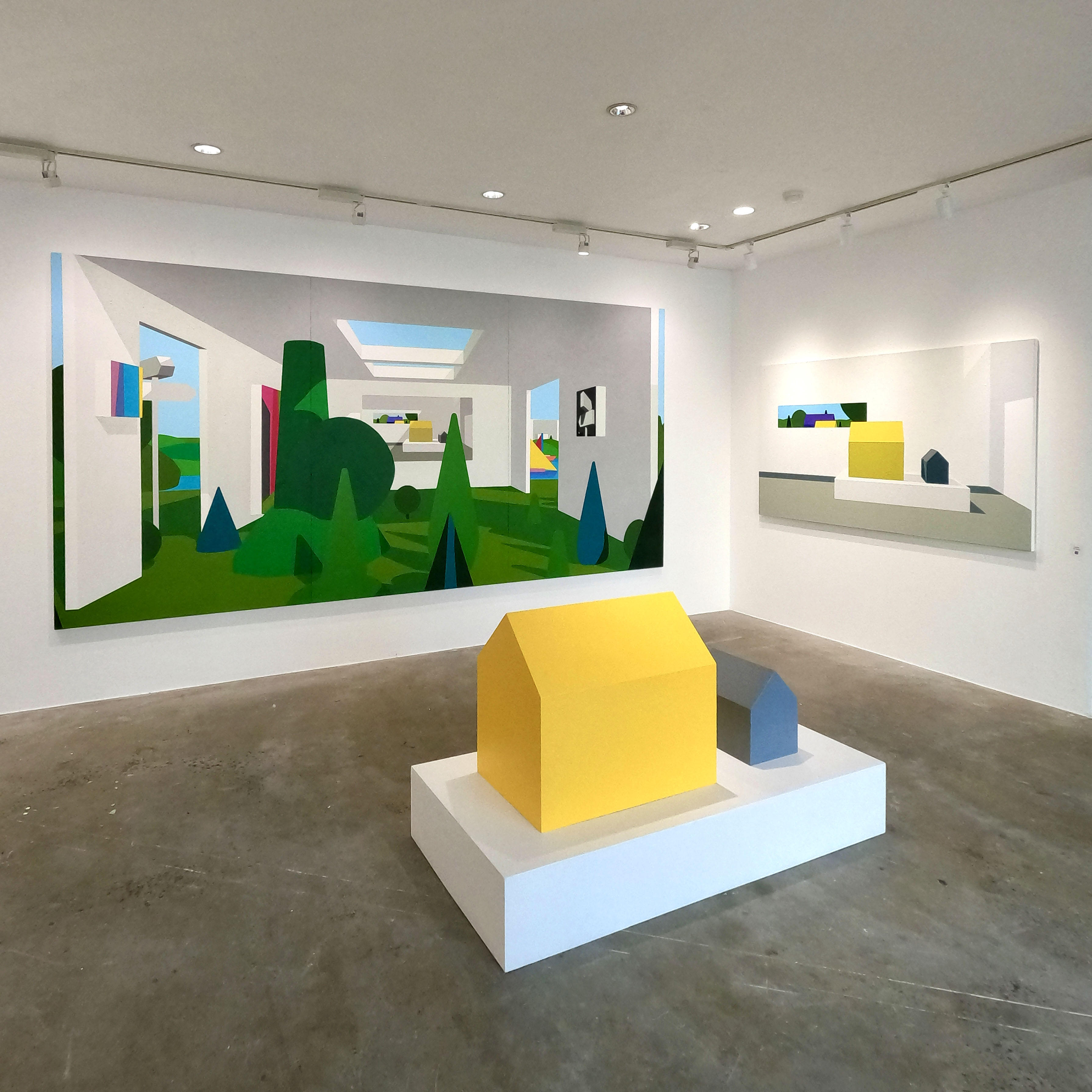

![[session extended] Related Exhibition of ART SETOUCHI @ DAIKANYAMA T-SITE anjin café](https://artfrontgallery.com/whatsnew/assets_c/2019/07/51b443e36450b17840c8fd878ff5b7350ac9f4c6-thumb-945x945-6744.jpg)


